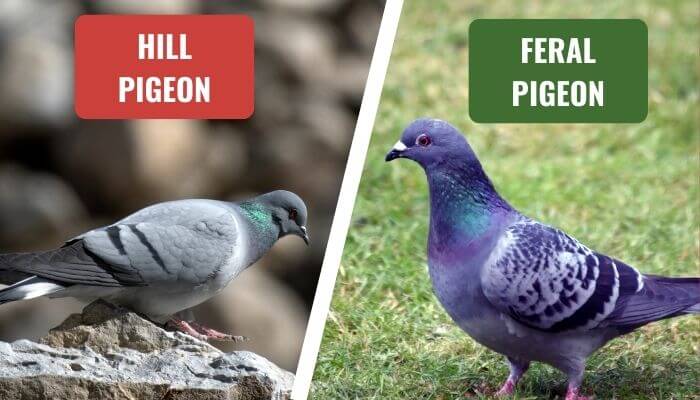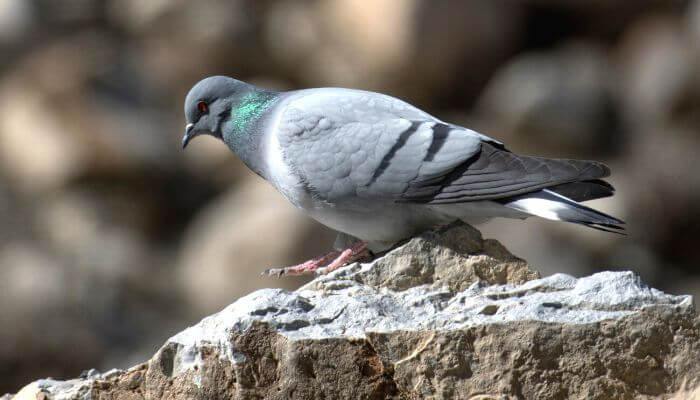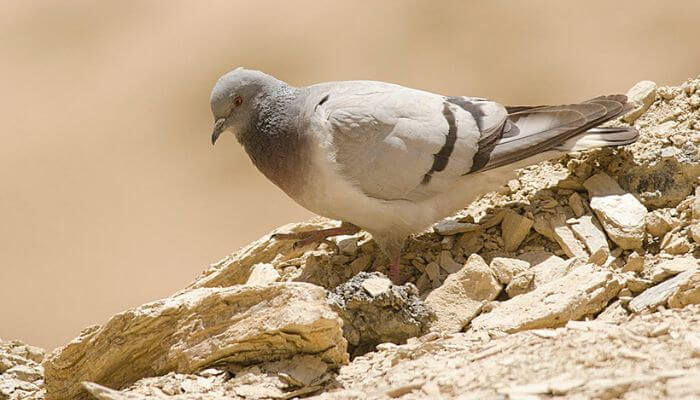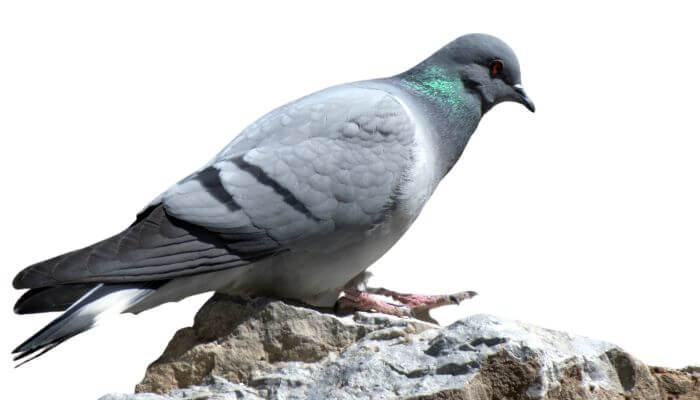A medium-sized stout-bodied species, the hill pigeon is similar in looks to a feral pigeon.
They live at altitudes above 1500m across a very great range in Asia.

Origins of the Hill Pigeon
An ancient natural breed, the hill pigeon is an obvious descendant of the original rock dove, being genetically and visually quite similar.
There is no specific point of origin nor date because of the many countries and expanse of territory in Asia in which this species is found.

Evolution has resulted in two subspecies of the hill pigeon:
The blue hill pigeon – found in its eastern ranges
The Turkestan hill pigeon – is found in its western ranges.
Distribution And Habitat of the Hill Pigeon
The species is readily found in the countries of China, India, Pakistan, Nepal, South Korea, North Korea, Kazakhstan, Mongolia, Afghanistan, Russia, Tajikistan and Turkmenistan.
Although it likes to live at altitudes between 1,500 and 6,000 meters, the hill pigeon has adapted to different environments including rocky areas of inland cliffs and mountain peaks, shrubland, alpine grassland, caves and non-aquatic subterranean habitats.

They will also venture into urban areas and onto agricultural land in small flocks in search of food.
Hill pigeons are known to be non-migratory but they are seasonal movements. Juvenile birds will disperse after the breeding season and all birds will move to lower ground as temperatures drop in winter.
The hill pigeon is a close cousin of the rock dove and snow pigeon.
The snow pigeon occupies much the same geographical area as the hill pigeon, namely Afghanistan, Bhutan, China, India, Kyrgyzstan, Myanmar, Nepal, Pakistan, Tajikistan and Turkmenistan.
Unlike its cousin, the snow pigeon is migratory and also prefers higher elevations, starting at 3,000 m up to the snow line.
Status of the Hill Pigeon
Conservationists have noted that although the overall population of the hill pigeon has been decreasing in recent years, this is not occurring at a fast enough rate to cause alarm.
Despite a lower population, the bird is still abundant and widely distributed in its traditional regions and is therefore classified as being of ‘Least Concern’ by the IUCN.
Hill Pigeon Appearance
| Wingspan | Length | Weight | Coloring | |
|---|---|---|---|---|
| Hill pigeon | 48 – 54 cm | 30 -35 cm | 280 – 300 g | Bluish grey with darker head and neck |
| Average Feral Pigeon | 64 – 72 cm | 32 – 37 cm | 300 – 500 g | Bluish grey with some black |
The hill pigeon is a bird that has a very stout body, similar in size to the rock dove.
The feature that distinguishes the two species is the tail which on the Hill pigeon bears a broad white band.

The hill pigeon has a pale mantle and upper wings. There are two black bars on the wings and a white patch on its back. When in flight, the tail pattern is similar to that of the snow pigeon.
Legs are red and the feet of the hill pigeon are a pale pink color. The bill is a muted grey or black and the eyes are red or orange..
There is very little to distinguish males and females in their overall appearance. Juveniles are dimmer in color with a brownish tinge and lack the metallic glossy feathers.
Character of the Hill Pigeon
Hill pigeons tend to congregate in flocks, mainly to feed. You will often find them mixing with Snow pigeons and Rock doves.
In general, hill pigeons are very tame birds and can often be found near human settlements and populated areas like camps and pilgrimage routes across the Asian continent.
The call of the hill pigeon is a distinct gurgling sound that is very quickly repeated in lengthy bursts.
Diet of the Hill Pigeon
A granivorous bird, there is a little deviation from what most pigeons eat in the diet of the hill pigeon.
As well as the usual cereals, seeds and grains, they are fond of green shoots and leaves but are also known to be fond of small snails.
Like the feral pigeon, hill pigeons are opportunistic feedings, happy to eat leftover human food and also partially digested food from animal dung, particularly that of the Tibetan wild ass and even undigested food from the stomachs of dead animals that have been ripped open by more dangerous predators.
Hill Pigeon Mating And Breeding Habits
Hill pigeons have been recorded as beginning to nest as early in the year as February in some places, but in other areas young can be hatched as late as September.
Peak breeding season is April to June.
The males partake in a display of bowing to attract a female mate, and once the courtship has been settled they find a place to nest as part of a dense colony on cliffs, gorges and in rocky outcrops.
In some places (like Tibet), nests have also been found in empty and inhabited houses, and in holes in walls.
The nests are made from twigs and plant stems and it is normal for two eggs to be laid.
Hill pigeons can sometimes raise two broods in a year.
Taking Care Of Hill Pigeons
Being a wild species, the Hill pigeon does not require any special care from humans other than the responsibility to be respectful of the environment and habitats in which they like to exist.
Though relatively tame and quite tolerant to human presence, these are not birds that it would be advisable or recommended to keep in a domestic setting. They belong in the wilds of Asia.
